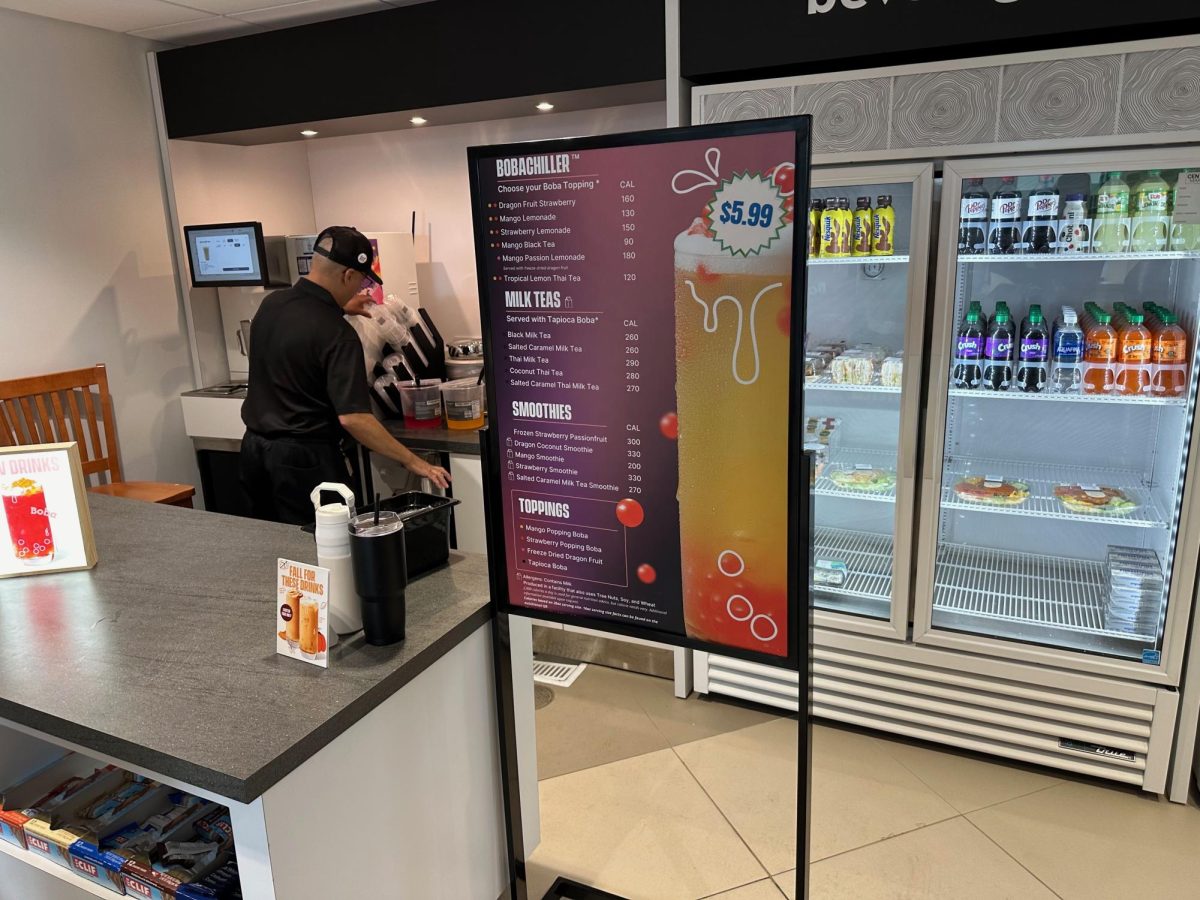By Kassondra Granata, Annmarie Anderson, Mike Rubano and Irene Yukash
Aspiring state legislator David Kramer, a CCSU student, learned a hard lesson this month about politics: motivating young voters is not easy.
Kramer hoped to see more than 100 students attend a three-day campus registration drive sponsored by the Student Government Association. Roughly a third of those who stopped by registered.
“Students are less interested in voting than I expected,” said Kramer, 26, a petition candidate in Connecticut’s 26th House District, which includes the CCSU campus.
But Kramer will need more than 33 potential new voters to unseat incumbent Democrat Peter Tercyak in a three-way race that also includes Republican Dan Davis.
Motivating young voters, the nation’s most unpredictable pool, remains a challenge at Central in the run-up to the Nov. 6 election.
The student vote also is something of a moving target because many students keep their hometown registration. Of Central’s 2,300 on-campus students, just 55 [or 2.4 percent] are registered to vote from their dormitory addresses. The number could grow at more registrations come in before Nov. 6.
“It’s really hit or miss with students,” said Karen Strumskas, New Britain’s Assistant Democratic Registrar of Voters. “We don’t get a very large turnout with students.”
Similarly, most off-campus students remain registered in their hometowns, though the city keeps no data on this group. One exception is CCSU student Bethany Kiefer, 25, of South Windsor, who registered to vote from her apartment at 256 Overlook Avenue just two miles from campus.
Kiefer, a biology major who is registered Independent, mostly cares about the presidential race. “People who are against Obama are just afraid of change,” Kiefer said. “They want to be unique and not progressive.”
The candidates in Connecticut’s deadlocked U.S. Senate race Republican Linda E. McMahon and Democrat Christopher S. Murphy are both targeting students this fall.
McMahon has sent workers Central and Southern Connecticut to tout her pledge to cut taxes for middle-class families and curb ‘job-killing’ government regulations.
“Linda McMahon is extremely concerned about the future of today’s college students,” said Todd Abrajano, a campaign spokesman. “Linda believes it’s a travesty that one of out every two college students [is] unemployed or underemployed after graduation.”
Murphy, who is vacating his U.S. House seat, has personally visited Yale University and Southern Connecticut and hopes to make a campaign stop at Central before the Nov. 6 election.
“We consider students an important group of voters,” said Eli Zupnick, a spokesman for Murphy’s campaign. “When it comes to issues that students care about, Chris Murphy is making sure that students know his plans to ensure that college is affordable.”
In the 2010 election, 43.9 percent of people ages 18 to 24 were registered to vote, according to the U.S. Census Bureau. But only 19.8 percent voted, the smallest turnout of any demographic group.
Factors influencing the student vote include confusion about the process, the appeal of individual candidates and the type of election. Most students are more interested in presidential candidates than local ones.
The 26th House District race is an exception because the district includes Central among its 25,000 residents in the city’s northern end. Kramer initially hoped to register 1,000 students on campus and 3,000 off campus, about 250 per day.
State lawmakers and other candidates will take students seriously if the students show interest in the issues, said Eric Bergenn, president of the CCSU Student Government Association.
“When I think about politicians in general, I don’t think that they choose to [find a specific] demographic,” Bergenn said. “What it really depends on is if the students are interested in the candidates.”
Democratic State Rep. Robert Sanchez’s 25th House District does not include Central. But the 51-year-old champion of education reform said he still finds time to push voter registration among the handful of off-campus students he comes across while campaigning.
“Although the University is not in my District, it is in New Britain, and there are many students that do live in my district,” said Sanchez, 51, who faces a dual challenge from Republican Richard Gadomski and petitioning candidate Al Mayo. “So, regardless, I’m willing to help.”
Student-registration controversies have arisen continually since 1971, when the voting age was lowered to 18 from 21. This year has been no different.
The website protectingthevote.org reports that more than 30 states have implemented new photo ID mandates since 2011, many of them allowing students to use their college IDs.
South Carolina and Tennessee are two states where the use of student ID’s are prohibited. The website makes a point that the use of student ID is also prohibited in Texas, but you can vote with a gun license.
In Connecticut, a list of in-person voter ID requirements can be found at the Office of the Secretary of the State website [sots.ct.gov]. Connecticut allows student identification as a valid form of ID.
Confusion about the voting process also contributes to low student voter registration. “I guess I don’t know how to register,” said Alysa Espinosa, 21, a nursing student from Portland. “More should be done to get students more politically aware. There should be more promotion on pushing student registration.”
Apathy is another factor. “I believe that candidates, regardless of their political stance, are in many ways empowered by and indebted to the firms, corporations and businesses which fun their ever-growing campaigns,” said Jon Wilson, 24, an economics major from Bristol who is not registered.
In 2008, Central students struggled to find their polling place, located several blocks from campus on Concord Street. This year should be easier with a new site just across the street, St. Francis of Assisi Church at 1755 Stanley St.
“They shouldn’t have any problem this year,” Strumskas said.
Phil North, Dante Perleche and Sandra Agrrey from Dr. Vivian Martin’s News Writing and Reporting Class also contributed to this story.


